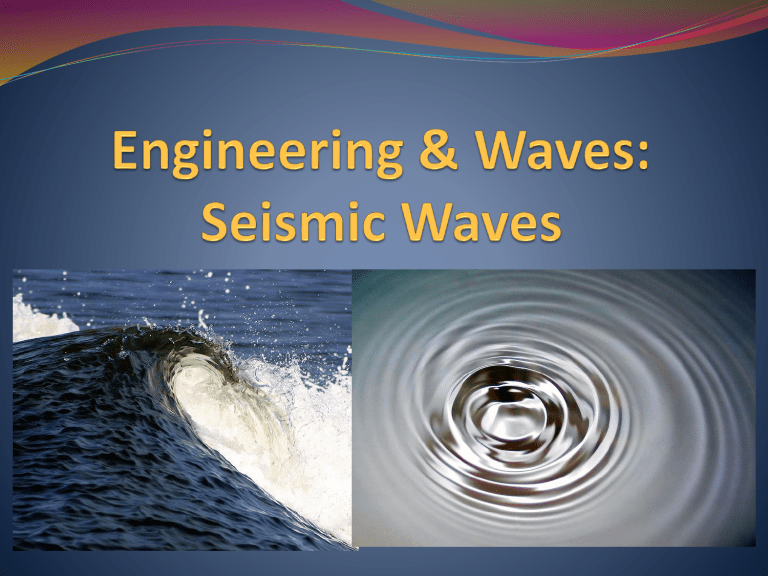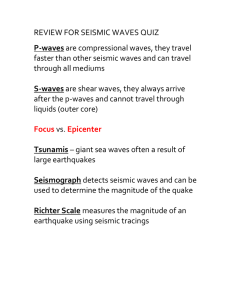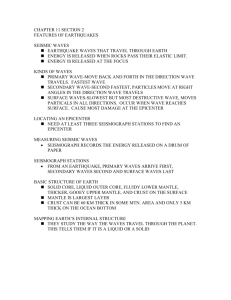Waves, Waves, Waves!
advertisement

Engineering Waves Overview In this lesson, we will learn about: What are waves? What are different types of waves? How do waves travel? How do waves relate to engineering? Our focus is on: Seismic waves Wave Basics What is a wave? A disturbance that travels through space or time, usually by the transfer of energy Many different types of waves! Wave Basics Important vocabulary: amplitude crest (ridge) trough frequency amplitude wavelength wavelength crest trough Types of Waves electromagnetic waves light waves radio waves sound waves ocean waves seismic waves standing waves In this animation of a standing wave, the red dots represent the nodes Why are engineers concerned about earthquakes? Seismic Waves Waves that travel through the Earth Classifications: Body Waves Faster, travel through the interior of the Earth P-waves (primary) S-waves (secondary) Surface Waves Slower, travel along the surface of the Earth Cause more damage Similar to water waves Love waves Rayleigh waves Body Waves: Primary Waves P-waves cause the ground to have vibrations along or parallel to the direction of the wave Fast! The first type of seismic wave to arrive at a point away from the epicenter Can travel through any medium Typical speeds: In air: 330 m/s In water: 1450 m/s In granite: 5000 m/s Plane P-wave Propagation of a P-wave on a 2Dgrid Body Waves: Secondary Waves S-waves cause the motion of the ground to be perpendicular to the direction of the wave Can only travel through solids Plane S-wave Speed is about 60% of a P-wave in a material Arrives second at a point away from the epicenter Propagation of a spherical S-wave on a 2D grid Surface Waves: Love Waves Love waves cause horizontal shifting of the Earth during earthquakes Move slower than P-waves and S-waves, but faster than Rayleigh waves Named for A.E.H. Love, the man who predicted this type of seismic wave in 1911 Surface Waves: Rayleigh Waves Rayleigh waves cause a rolling motion—like ocean waves Slowest of the seismic waves (travel at around 3 km/s) Produced by the interaction of P- and S-waves at the Earth’s surface Can be used to characterize the Earth’s interior and oil deposits All Seismic Waves Intensity depends on: Size of earthquake Distance to the earthquake Depth of the earthquake Geological structure of the crust The amplitude decreases with increasing depth of the earthquake and with distance traveled More information on Seismic Waves Engineering Design and Shake Tables The World’s Largest Shake Table







